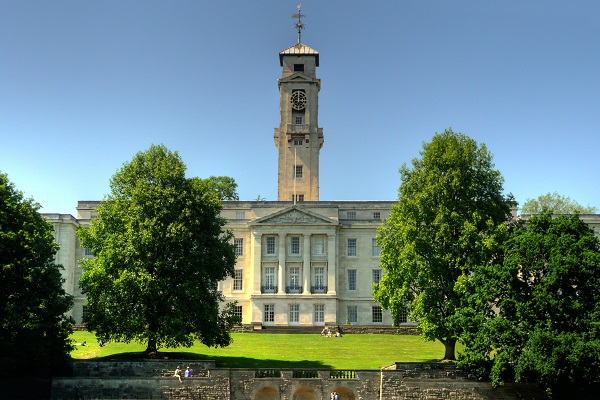University of Nottingham: Train crash philosophy experiment to be brought to life with Virtual Reality
Picture the scene: you’re standing on a platform watching a runaway train that’s on course to crash into five people. With the flick of a switch you could divert the train on to another track where there is only one person. Would you do it?
That’s the basis of the famous philosophy thought experiment known as The Trolley Dilemma. Created by Philippa Foot in the 1960s, the experiment is usually confined to discussion in classrooms and lecture theatres but this month, in what is believed to be a UK first, members of the public will be able to experience it in Virtual Reality (VR) during an event at the Nottingham Contemporary art gallery.
The project is a collaboration between the University of Nottingham’s Dr Matthew Duncombe, Associate Professor in Philosophy and Dr Paul Tennent, Assistant Professor in Computer Science, and aims to make philosophy more real – taking it from abstract concepts to a tangible experience.
Dr Duncombe said: “I love a good museum, and hands-on museums in particular are great, but it’s very hard to create one for philosophy, which doesn’t really have any physical artefacts.
By using VR we can bring philosophy to life and allow people to experience the kind of thought experiments we do in a very real way. We believe it is the first time that anyone in the UK has merged VR with a classical philosophy dilemma in this way.
Dr Matthew Duncombe, Associate Professor in Philosophy
The event, which has been funded by the Royal Institute of Philosophy, will allow participants to witness the Trolley Dilemma playing out before them using Oculus 2 VR headsets, most commonly used in gaming.
“It’s exploring the intersection between philosophy and entertainment,” Dr Duncombe said. “Philosophy becomes much more interesting when you take it away from the world of academia and explore the views of a wider cross-section of people.
“You might have an idea of what you think you’d do, but no-one really knows until they are actually in a situation and this allows you to get as close to that situation as you’re, hopefully, ever likely to.”
The technology has been created by Rokas Danevicius, a research Associate in the School of Computer Science, supervised by Dr Tennent and Dr Duncombe.
I’m very interested in the decision-making aspect of VR and whether or not the environment you’re in changes your decisions. It also allows us to introduce an element of pressure to the decision-making which you wouldn’t have during the course of an ordinary thought experiment, be that time or the requirement to complete another task before you can make the decision.
Dr Paul Tennent, Assistant Professor in Computer Science
Participants will have the chance to take part in eight different versions of the trolley experiment – ranging from the original scenario to one where you have to solve a maths puzzle before you can access the switch that flips the tracks. There will also be multi-player versions where you work with another person to reach the final decision.
In between each scenario, visitors will be encouraged to discuss what happened and the reasons why they made their decisions, whilst still wearing the headsets and immersed in the VR world.
Dr Tennent said: “The discussion period is as much a part of the experience as the game-play itself. In a normal thought experiment you would spend lots of time discussing the dilemma before you made the decision, but in this case you’re put into the situation and not given a lot of time to think, so it’s crucial to have that discussion afterwards to try to unpick why you made the decision you did.”
And, rest assured, there is no right or wrong answer.
“Either option is defensible,” said Dr Duncombe. “Both have good arguments on their side. If there was an easy right or wrong it wouldn’t be a dilemma.”

